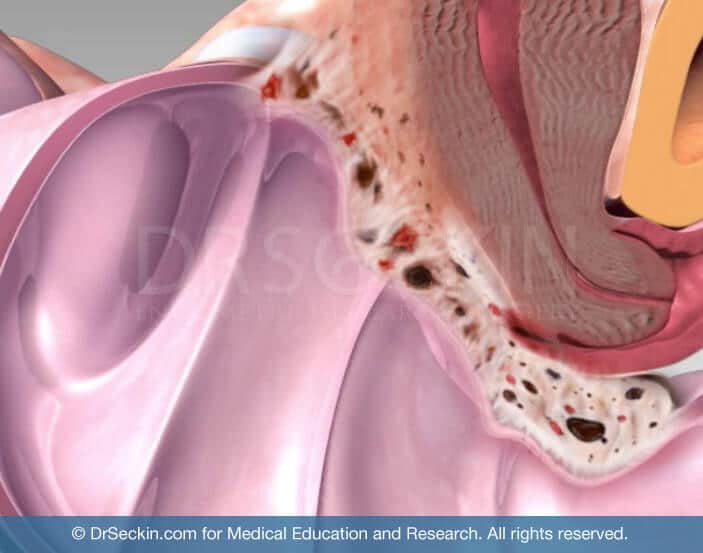
Deep infiltrating endometriosis (DIE) is a highly invasive form of endometriosis. It is characterized by the presence of rectovaginal nodules and disease of the uterosacral ligaments, rectum, rectovaginal septum, vagina, and bladder. Rectovaginal nodules are nodules that form in the space between the vagina and the rectum.
Causes of DIE
When ovarian endometriomas become large enough and invade the wall of the ovaries, they begin to leak. They may even rupture. When this happens, the thickened blood, inflammatory enzymes, and other debris that these fluid-filled endometriomas contained spill onto other areas within the abdominal and pelvic cavity. The contents then adhere to these areas. Here, they begin to form the nodules and scar tissue that are characteristic of DIE.
Get a Second Opinion
Our endometriosis specialists are dedicated to providing patients with expert care. Whether you have been diagnosed or are looking to find a doctor, they are ready to help.Our office is located on 872 Fifth Avenue New York, NY 10065.
You may call us at (212) 988-1444 or have your case reviewed by clicking here.
Symptoms of DIE
Women with this type of disease usually experience high levels of pelvic pain, anatomic distortion, infertility, dysuria, dysmenorrhea, and dyspareunia. They may also experience gastrointestinal distress that may lead to symptoms that resemble those of irritable bowel syndrome.

Treatment
The surgical treatment for DIE is the same as that for the frozen pelvis. It consists of minimally invasive techniques, also known as advanced laparoscopy.
Get a Second Opinion
Our endometriosis specialists are dedicated to providing patients with expert care. Whether you have been diagnosed or are looking to find a doctor, they are ready to help.Our office is located on 872 Fifth Avenue New York, NY 10065.
You may call us at (646) 960-3080 or have your case reviewed by clicking here.
Dr. Seckin is an endometriosis specialist and women’s reproductive health advocate. He has been in private practice for over 30 years at Lenox Hill Hospital with a team of highly skilled personnel.
Dr. Seckin specializes in advanced laparoscopic procedures and is recognized for his expertise in complex cases of deep infiltrating endometriosis of the pelvis. He is particularly dedicated to performing fertility-preserving surgeries on cases involving the ovaries.
He has developed patented surgical techniques, most notably the “Aqua Blue Excision” technique for a better visualization of endometriosis lesions. His surgical techniques are based on precision and microsurgery, emphasizing organ and fertility preservation, and adhesion and pain prevention.
Dr. Seckin is considered a pioneer and advocate in the field of endometriosis.
